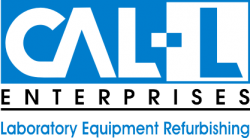While environmental officials say the vast majority of drinking water that’s been tested in Massachusetts schools is safe, more than 99 school buildings across at least 22 communities have tested positive for elevated lead levels since June, when the state launched a new grant program to help schools test their water.
“A key component of our advice is to be very proactive and transparent with the community about the fact that they’re doing sampling, what the sampling shows, and what their remedial activities are, including long-term plans,” said Douglas Fine, assistant commissioner for water programs at the Massachusetts Department of Environmental Protection.
Following the drinking water crisis in Flint, Mich., Gov. Charlie Baker announced this past spring that the DEP would administer a $2 million grant program to help schools test their water. As of Nov. 1, roughly 930 school buildings had signed up for the voluntary water-testing program. Samples have been collected from approximately 400 schools to date.
About half the 1,854 public schools in the state are not enrolled in the voluntary DEP program.
While some school systems have conducted their own testing without enrolling in the grant program, the state does not have a centralized record of results.
Schools that conduct independent tests may share the results with the DEP, but they’re not required to do so. The result is the DEP’s records don’t include results from schools in communities such as Boston and Newton, where independent tests showed unacceptable lead levels in some schools earlier this year.
Lead exposure can cause nervous system and kidney damage and lead to developmental delays in children, according to the Centers for Disease Control and Prevention. In Massachusetts, children have typically been exposed to lead through old paint chips, according to the DEP, but Flint’s experiences are prompting many to take a new look at their drinking water.
While there may still be lead service lines in some parts of Massachusetts, that hasn’t generally affected the water flowing to schools, which typically have newer service lines made from iron or other materials.
There are also not generally problems with the water supply, according to environmental officials.
Since 1992, the Massachusetts Water Resources Authority, which supplies water to 51 communities, has added corrosion control agents to its water. The treatment agent helps prevent lead from old pipes and service lines from entering the water.
“That’s been a very successful program,” MWRA spokeswoman Ria Convery said.
When the MWRA tested across its entire system in September, the average lead level was 7 parts per billion, less than half the “federal action level” of 15 parts per billion. If lead amounts exceed that level, federal law requires water suppliers to educate consumers on how to reduce their exposure.
In most cases where lead exceeds the federal action level, the source can be traced to issues within the school building, such as interior pipes, lead solder and old fixtures.
In most of the schools where problems have been identified, high lead levels have been found in a small number of the dozens of drinking fountains and faucets tested. The average school has approximately three-dozen fixtures, said Damon Guterman, a senior drinking water analyst with the DEP.
Current state regulations require that each public water supplier test one kitchen faucet and one drinking fountain in two schools per sampling period. The sampling period can range from six months to three years depending on the results of lead testing at homes in the community.
As a result, many schools haven’t had all their water fixtures comprehensively tested until the Flint water crisis sparked a new wave of concern over lead.
When excessive lead levels are detected, the DEP offers assistance in developing short-term and long-term remediation plans.
An effective short-term solution, Guterman said, can be as simple as running the water for a few minutes each morning to flush out the system.
Long-term solutions can include taking surplus fountains and faucets out of service, replacing old infrastructure and adding filtration systems.
In Boston, the seven affected schools switched to bottled water coolers in the short-term after tests showed elevated lead levels this summer. The school system also announced it was installing filtration systems in kitchen faucets.
“BPS will continue to consult with health and water experts to develop a long-term solution that will ensure predictable and consistently low, or non-detectable, lead levels. We will work to further explore the use of filtering mechanisms, advance our knowledge of flushing protocols, and adopt best practices that could serve as a national model,” Boston Superintendent Tommy Chang said in a letter to parents before the start of the school year.
Fine said he hopes the recent concern over lead will prompt school systems to comprehensively test every water fixture at least once every three years.
“We’re hoping to encourage more and more districts to participate in the voluntary program,” he said. “We’re giving them some more tools, including education. We’re hoping this continues on as something they run internally.”
